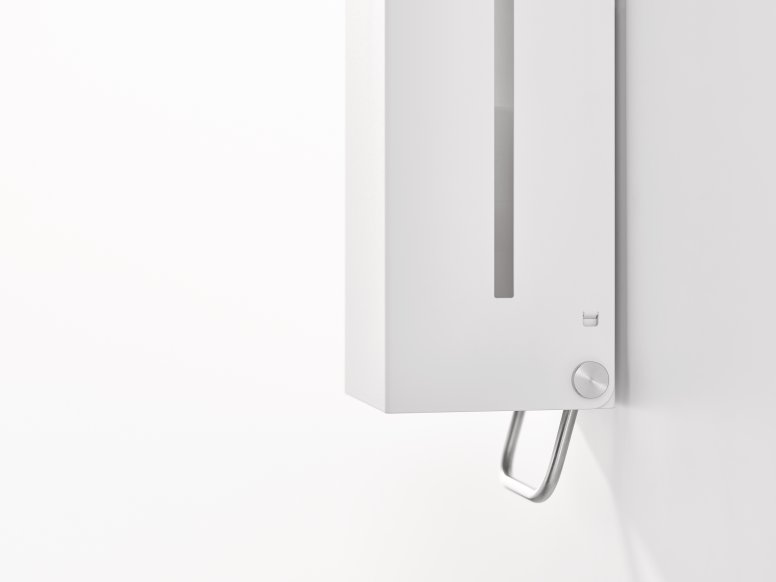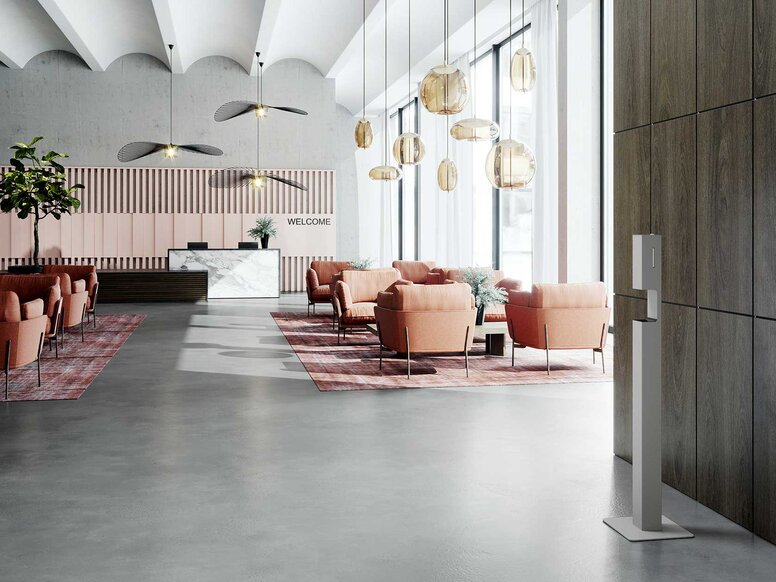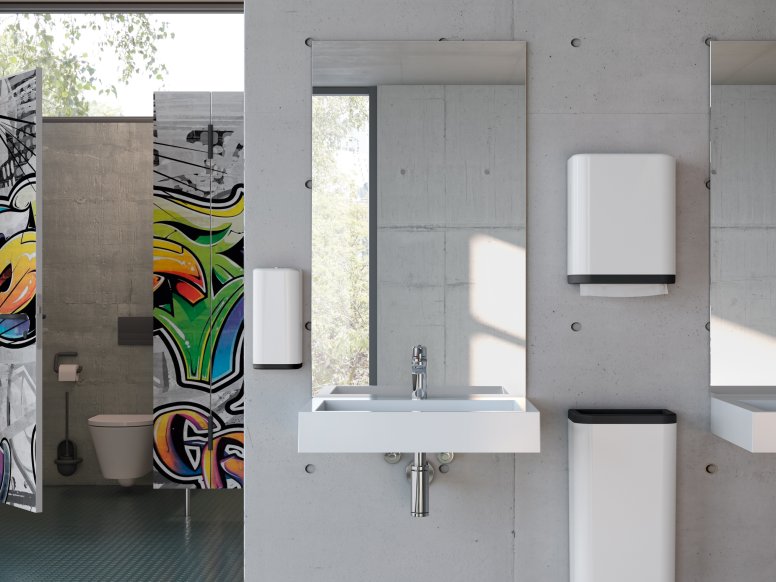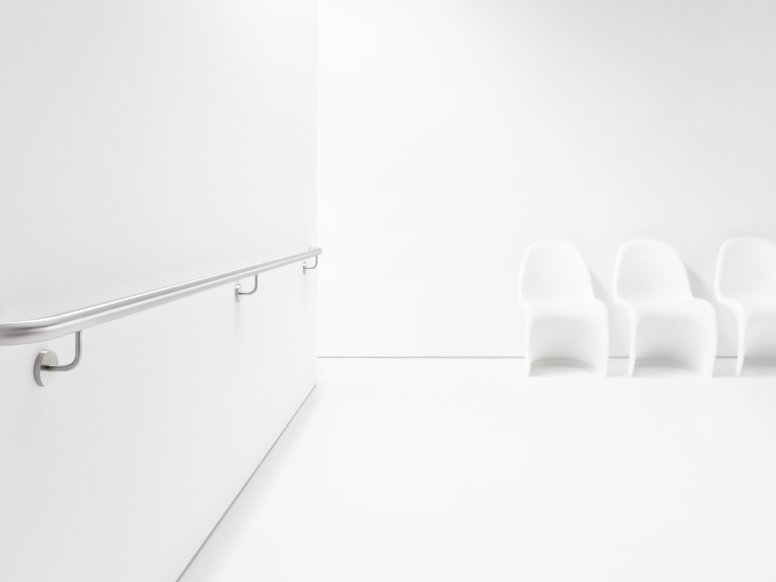HEWI MAG / Knowledge
Hygiene as a social responsibility
It may seem self-evident but hygiene has always been a particularly important subject in the care sector. Today, however, hygiene and protection against infection are also becoming determining factors in the interior design of public and semi-public buildings. Even with short cleaning intervals, handrails, door handles and sanitary equipment represent fertile ground for a multitude of pathogens with an increased risk of infection. Innovative materials, hygienic processing and intelligent functions can effectively support passive hygiene and significantly reduce the risk of infection.
Hygienic materials reduce infections
After the transmission of infection from breath, the second most common source of infection for the transfer of viruses and bacteria is via the hands. Choice of materials has a decisive influence on hygienic product design. Stainless steel is a pore-free and therefore particularly hygienic surface. Minimal care is enough to prevent dirt or microorganisms from accumulating. The material is extremely robust and insensitive to scratches. And stainless steel products are also extremely resistant to cleaning agents and disinfectants.
High-gloss polyamide is another material with a pore-free surface and optimal cleaning properties. The choice of material is an essential part of product development at HEWI. Active+, enriched with microsilver, is a particularly innovative surface material, which continuously inhibits the growth of germs on its surface, offering an effective and active hygiene plus for hallways and sanitary areas.

Well thought out details
We do a lot of thinking about the details. For example, we make sure our products have the smallest possible number of joints and connection points in which dirt and water might collect. Naturally this thinking is particularly important at the washbasin or in the shower.
With uneven walls, railing systems and their fixing roses are often not completely flush with the wall. With one of our well thought out installation features, a quick and reliable seal solves the problem. With the wall brackets from our System 900 for example, the hinged support rails, as well as their roses can be equipped with these sealing elements. They are also designed to ensure water does not collect on the surfaces and can easily run off.
From entering to leaving sanitary rooms, which are equipped with common dispenser systems, we can touch up to 20 surfaces – from door handles, to soap dispensers, to the flushing lever. To reduce the risk of infection, contactless product solutions are the obvious answer. As well as classic sanitary solutions, HEWI offers a large selection of products with non-contact sensor design.



